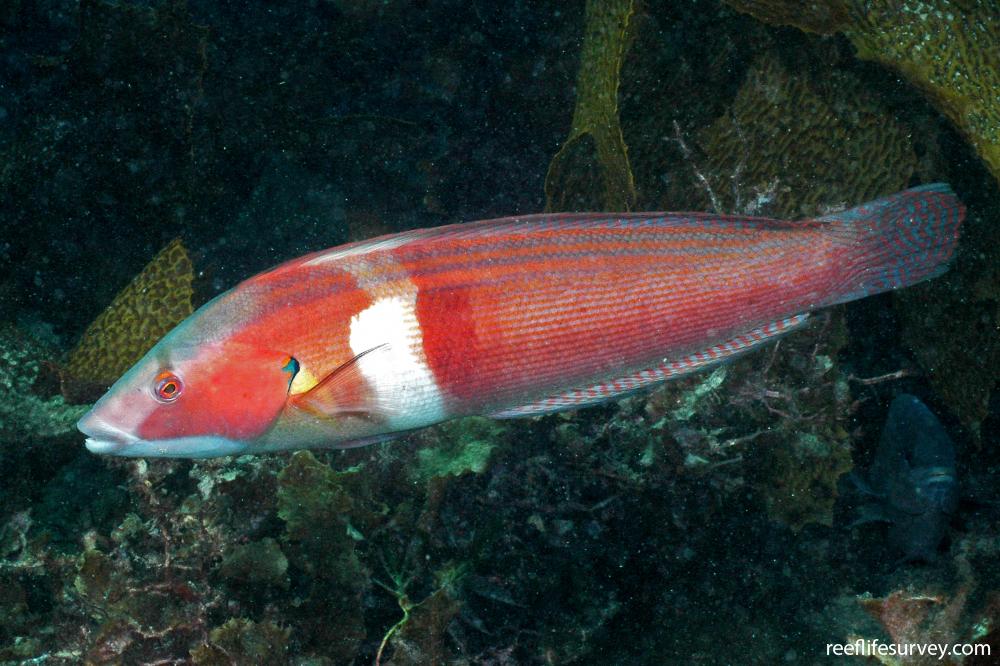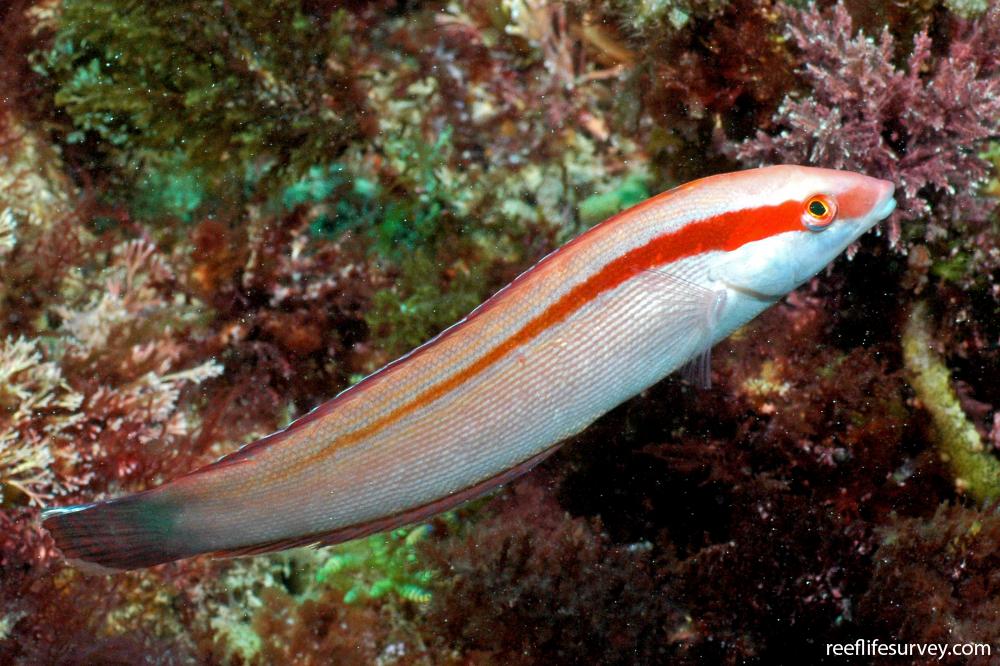Coris auricularis
Western king wrasse | King WrasseSimilar Species
Same Genus
Distribution
Temperate Australasia, Tropical Indo-Pacific
Description
Life stages differ greatly; males red with broad white bar behind pectoral fin followed by a slightly dark red bar, blue patch on rear of gill cover, white chin and yellow pectoral fin base; females white with red/yellow stripe narrowing from snout through eye along body; juveniles black with red eye and thin white stripe along side to tail base and another along middle of back at base of dorsal fin. Juveniles and small females set up cleaner stayions to pick parasites off larger fishes.
Information
Max Size: 40 cm
Sea Temperature Range: 16.9-23.7°C
Depth: 1-45 m
Habitat Generalization Index: 21.38
Also referred to as the SGI (Species Generalisation Index), this describes the habitat niche breadth of the species. Species with values less than 15 are found in a relatively narrow range of reef habitat types (specialists), while those over 25 may be found on most hard substrates within their range (generalists). Learn more here.
Conservation and Rarity
IUCN Status: Least Concern
Occurrence: Widespread (51.6% of sites)
Occurrence describes how often the species is found on surveys within its distribution. It is calculated as the % of reef sites surveyed by RLS divers across all the ecoregions in which the species has been observed
Abundance: Many (26 per transect)
Abundance is calculated as the average number of individuals recorded per RLS transect, where present.
Edit by: GJ Edgar. 2008. Australian Marine Life. New Holland, Sydney



























